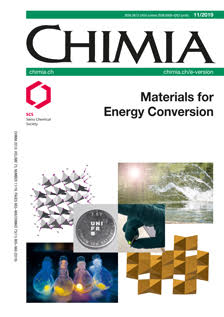Bimetallic Electrocatalysts for Carbon Dioxide Reduction
DOI:
https://doi.org/10.2533/chimia.2019.928PMID:
31753074Keywords:
Bimetallic catalyst, Carbon dioxide, Copper, EthyleneAbstract
Electrochemical reduction of carbon dioxide, using the electricity generated from renewable energy sources, has the potential of rendering a carbon-neutral energy economy. Developing selective, efficient and robust electrocatalysts is the key step towards establishing this promising technology. While different nanostructures of Cu have been extensively studied for the formation of C1–C3 alcohols and hydrocarbons, Cu-based bimetallic catalysts showed better activity compared to monometallic Cu. In this review, we will first summarize recent advances in designing Cu-X bimetallic catalysts. We categorized the bimetallic catalysts into different groups based on the CO2 reduction activities of the ' X ' metal, including hydrogen-producing metals, formate-producing metals and CO-producing metals. The key factors in determining the selectivity are discussed. Additionally, representative examples of Cu-free bimetallic catalysts, with appreciable selectivity towards hydrocarbons/alcohols, will also be presented. We will conclude this review with challenges and promising research directions.
Downloads
Published
Issue
Section
License
Copyright (c) 2019 Swiss Chemical Society

This work is licensed under a Creative Commons Attribution-NonCommercial 4.0 International License.







